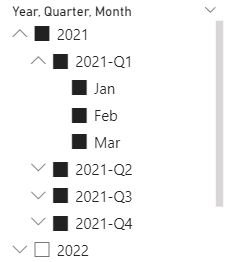Knowing how to work with dates and manipulate them accordingly is probably one of the important pieces of knowledge in any query language. Fortunately, KQL has many date-related functions that can help developers in the process and the available documentation is detailed enough to support users in learning their use. The current post focuses on the main uses of dates.
Please note that the scripts consider the main time units. Please check the documentation for functions' call for other time units.
Create dates via make_datetime, now and ago functions:
// creating dates from parts print datetime1 = make_datetime(2025,1,1) , datetime2 = make_datetime(2025,1,1,0,0,0) , datetime3 = make_datetime(2025,1,1,1,2,3) // creating dates from values print date1 = datetime(2024-02-01) , datetime(2024-02-01 00:00:00) , datetime(2024-02-01 23:59:59) , datetime(2024-02-01 23:59:59.123) // now vs todatetime (return the same value) print datetime1 = now() , datetime2 = todatetime(now()) , datetime3 = ago(0h)
Extract information from dates via datetime_part, substring and individual functions: getyear, week_of_year, monthofyear, dayofyear, hourofday, dayofmonth, dayofweek, dayofyear, dayofmonth, dayofweek, endofyear, endofweek, endofmonth, endofday, startofyear, startofweek, startofmonth, startofday:
// date parts front date print now = now() , year = datetime_part('year', now()) , month = datetime_part('month', now()) , day = datetime_part('day', now()) , hour = datetime_part('hour', now()) , minute = datetime_part('minute', now()) , second = datetime_part('second', now()) // date parts from string let t = datetime("2024-12-31 10:35:59"); print year = substring(t, 0, 4) , month = substring(t, 5, 2) , day = substring(t, 8, 2) , hour = substring(t, 11, 2) , minute = substring(t, 14, 2) , second = substring(t, 17, 2) // date parts via functions print year = getyear(now()) , week = week_of_year(now())//ISO 8601 compliant , month = monthofyear(now()) , day = dayofyear(now()) , hour = hourofday(now()) // day functions print year = dayofyear(now()) , month = dayofmonth(now()) , day = dayofweek(now()) // end of time dates print year = endofyear(now()) , week = endofweek(now()) , month = endofmonth(now()) , day = endofday(now()) // start of time dates print year = startofyear(now()) , week = startofweek(now()) , month = startofmonth(now()) , day = startofday(now()) //time units print hours1 = time(1hour) , minutes1 = time(1min) , seconds1 = time(1second) , hours2 = totimespan("0.01:00:00") , minutes2 = totimespan("0.00:01:00") , seconds2 = totimespan("0.00:00:01")
Working with dates via datetime_add and datetime_diff functions:
// adding time units print year = datetime_add('year',1,now()) , month = datetime_add('month',1,now()) , day = datetime_add('day',1,now()) , hour = datetime_add('hour',1,now()) , minutes = datetime_add('minute',1,now()) , seconds = datetime_add('second',1,now()) // data differences print years = datetime_diff('year', now(), ago(1h)) , months = datetime_diff('month', now(), ago(1h)) , days = datetime_diff('day', now(), ago(1h)) , hours = datetime_diff('hour', now(), ago(1h)) , minutes = datetime_diff('minute', now(), ago(1h)) , seconds = datetime_diff('second', now(), ago(1h))
Working with time zones via datetime_local_to_utc and datetime_utc_to_local functions:
// local time across time zones print ParisTime = datetime_local_to_utc(now(),'Europe/Paris') , LondonTime = datetime_local_to_utc(now(),'Europe/London')
, LondonTime = datetime_local_to_utc(now(),'Europe/Budapest'), AthensTime = datetime_local_to_utc(now(),'Europe/Athens') // local time across time zones print ParisTime = datetime_utc_to_local(now(),'Europe/Paris') , LondonTime = datetime_utc_to_local(ago(1h),'Europe/London') , BudapestTime = datetime_utc_to_local(ago(-1h),'Europe/Budapest') , AthensTime = datetime_utc_to_local(ago(-2h),'Europe/Athens')
Applying different formatting with tostring, format_timespan and format_datetime functions:
// date and time to string print date1 = tostring(datetime(2024-02-01 00:00:00)) , time1 = tostring(totimespan("0.01:02:03")) , hours1 = tostring(time(1hour)) // formatting timespans let t = time("25.10:35:59.123456"); print date1 = format_timespan(t, 'dd.hh:mm:ss:FF') , date2 = format_timespan(t, 'ddd.h:mm:ss [ffff]') // formatting dates let t = datetime("2024-12-31 10:35:59"); print date1 = format_datetime(t,'yyyy-MM-dd [HH:mm:ss]') , date2 = format_datetime(t,'yy-MM-dd HH:mm:ss') , date3 = format_datetime(t,'yy-MM-dd [HH:mm:ss tt]')
Considering the above functions, one has a good basis for working with dates.
Happy coding!


